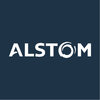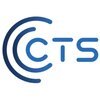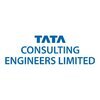Filter interviews by
Sogex Oman India Control & Instrumentation Engineer Interview Questions and Answers
Sogex Oman India Control & Instrumentation Engineer Interview Experiences
1 interview found
(1 Question)
- Q1. ABB plcAC800m scda software name?
- Ans.
ABB's PLCAC800m SCDA software is called Control Builder M.
Control Builder M is the engineering tool used for programming and configuring ABB's AC 800M controllers.
It allows for creating control logic, configuring hardware, and integrating with SCADA systems.
Examples of features include function block diagrams, sequential function charts, and structured text programming.
Top trending discussions






Interview questions from similar companies

Control & Instrumentation Engineer Interview Questions & Answers
Megha Engineering & Infrastructuresposted on 17 May 2021
Interview Questionnaire
1 Question
- Q1. How many types of water pumps are there?
- Ans.
There are several types of water pumps used for different applications.
Centrifugal pumps
Submersible pumps
Reciprocating pumps
Diaphragm pumps
Jet pumps
Gear pumps
Screw pumps
Vane pumps
Axial flow pumps
Mixed flow pumps

Control & Instrumentation Engineer Interview Questions & Answers
Worleyposted on 5 Sep 2023

(1 Question)
- Q1. Codes and standards for orifice sizing,ratings for level instruments,Productivity,and many more.
- Ans.
Codes and standards play a crucial role in ensuring proper sizing and ratings for orifice and level instruments in the field of control & instrumentation engineering.
Codes and standards such as ASME, API, and ISA provide guidelines for orifice sizing and ratings.
Proper selection of orifice size is essential for accurate flow measurement.
Level instrument ratings are determined based on factors like pressure, temperature...
(2 Questions)
- Q1. Not yet conducted
- Q2. Not performed yet
Interview Preparation Tips

Control & Instrumentation Engineer Interview Questions & Answers
Alstom Transportationposted on 26 Nov 2023
I applied via Recruitment Consulltant and was interviewed in May 2023. There were 2 interview rounds.

(2 Questions)
- Q1. Design using simulink
- Ans.
Simulink is a graphical programming environment for modeling, simulating, and analyzing dynamic systems.
Simulink is used for designing and simulating control systems, signal processing systems, and communication systems.
It provides a block diagram environment where you can connect blocks representing system components.
Simulink models can be used for real-time simulation, hardware-in-the-loop testing, and rapid prototyp...
- Q2. Pid controller design, response, model based design

Software Developer Interview Questions & Answers
CTS Consulting & Technical Supportposted on 9 Oct 2021
I applied via Campus Placement and was interviewed before Oct 2020. There was 1 interview round.
Interview Questionnaire
1 Question
- Q1. Everything in your resume questions from your domain and 1 quizzes
Interview Preparation Tips

Senior Engineer Interview Questions & Answers
Megha Engineering & Infrastructuresposted on 23 Oct 2020
I applied via Recruitment Consultant and was interviewed in Apr 2020. There were 3 interview rounds.
Interview Questionnaire
1 Question
- Q1. About HT/LT,Motor/Feeder & Substation Errection & Commission.
Interview Preparation Tips

Interview Questionnaire
1 Question
- Q1. Hard core techanical

Associate Interview Questions & Answers
CTS Consulting & Technical Supportposted on 29 Jun 2015
Interview Preparation Tips
Experience: A 45 mins round which consisted of 30 mins of core questions and 15 mins of data structures. It was a mix of test on our knowledge .
Round: HR Interview
Experience: Most of the questions were based on general knowledge and many of them were from the resume provides by me
General Tips: It is always advisable to be prepared with certain set of general questions which make it easier to answer.
Skill Tips: Focus on your Study.. Revise the subject that you have studied at the time of Interview
Skills: Technical Skills
College Name: IIT MADRAS

Associate Interview Questions & Answers
CTS Consulting & Technical Supportposted on 29 Jun 2015
Interview Preparation Tips
Experience: Questions were on Aptitude, English, Probability, Permutations andCombinations and Programming (C, C++). NO Group Discussion was held.Candidates were shortlisted on the basis of their test scores.
Round: Technical Interview
Experience: Total time of this round was 45 minutes.First 30 minutes, questions on core programming were asked and in the remaining 15 minutes questions were asked on data structures.
Round: HR Interview
Experience: This was a 5 minute round where questions were put up, some based on the resume and other were general questions.
Skills: Knowledge in MATLAB.
College Name: IIT MADRAS

Senior Engineer Interview Questions & Answers
Megha Engineering & Infrastructuresposted on 14 Jul 2017
I appeared for an interview before Jul 2016.
Interview Preparation Tips
Duration: 4 hours 5 minutes
Round: Test
Duration: 2 hours 5 minutes
Sogex Oman India Interview FAQs
Tell us how to improve this page.
Overall Interview Experience Rating
based on 1 interview experience
Interview Questions from Similar Companies
|
Control Room Engineer
21
salaries
| ₹6 L/yr - ₹12 L/yr |
|
Deputy Manager
21
salaries
| ₹6.2 L/yr - ₹11 L/yr |
|
Electrical Engineer
14
salaries
| ₹9 L/yr - ₹15 L/yr |
|
Instrumentation Technician
7
salaries
| ₹3.1 L/yr - ₹6 L/yr |
|
Electrical Supervisor
7
salaries
| ₹3.6 L/yr - ₹4.7 L/yr |

Megha Engineering & Infrastructures

Shapoorji Pallonji Group

Alstom Transportation

Tata Technologies
- Home >
- Interviews >
- Sogex Oman India Interview Questions











